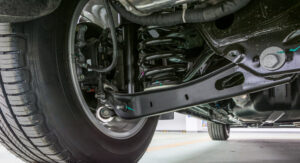MuscleCar Builds
Want more content like this?
Join the PowerNation Email NewsletterParts Used In This Episode
Matco Tools
Deep hook attachment, Plugweld pliers, Spot weld drill kit.
Matco Tools
Four ton Porta-Power.
Metalcraft Tools
Lancaster Porto-Metal Former.
PlymoVent
A mechanical portable filter for welding fumes and other dry dust.
Tennsmith
Hand brake, slip rolls, shears and notchers.
Volunteer Welding Supply
At Volunteer Welding Supply, you'll find the finest equipment and supplies by Miller, Lincoln, ESAB, Victor, Tweco and others, plus experienced professionals who can help you determine your firm's needs.

























